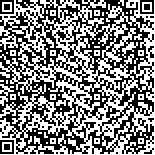王婕,倪卫东,潘静娴,等.定制化矫形鞋垫对脑卒中偏瘫患者步态及平衡功能的影响[J].中华物理医学与康复杂志,2022,44(11):999-1003
扫码阅读全文

|
| 定制化矫形鞋垫对脑卒中偏瘫患者步态及平衡功能的影响 |
|
| |
| DOI:10.3760/cma.j.issn.0254-1424.2022.11.008 |
| 中文关键词: 脑卒中 步态 定制化矫形鞋垫 |
| 英文关键词: Stroke Gait Orthoses Insoles |
| 基金项目:上海市“科技创新行动计划”医学创新研究专项面上项目(21Y11903000);徐汇区医学科研重大项目(SHXH201901) |
|
| 摘要点击次数: 3948 |
| 全文下载次数: 4672 |
| 中文摘要: |
| 目的 观察定制化矫形鞋垫对脑卒中偏瘫患者步态及平衡功能的影响。 方法 采用随机数字表法将60例脑卒中后步态异常患者分为踝足矫形器组(AFO组)和矫形鞋垫组(简称鞋垫组),每组30例。AFO组给予常规康复训练及AFO适配训练,鞋垫组给予常规康复训练及定制化矫形鞋垫适配训练,2组患者均干预4周。于适配前、适配后8 h及适配后4周时对2组患者进行疗效评估,评估项目包括Tinetti步态评估量表(TGS)、足底压力平衡指数、左右步长差值、步宽(足印法测试)、计时起立行走测试(TUGT)、下肢Fugl-Meyer评分(FMA-LE)、6分钟步行测试(6MWT)、躯干姿势控制量表(TIS)、Berg平衡量表(BBS)及Barthel指数量表(BI)等。 结果 适配后8 h鞋垫组上述各项指标均较AFO组有改善趋势,但组间差异无统计学意义(P>0.05)。适配后4周时,鞋垫组TGS、平衡指数(赤足和穿鞋+辅具时)、左右步长差值、BBS及BI评分均明显优于AFO组水平,组间差异均具有统计学意义(P<0.05),而平衡指数(仅穿鞋、无辅具)、步宽、FMA-LE、TIS、TUGT及6MWT等指标两组间差异无统计学意义(P>0.05)。 结论 与踝足矫形器比较,定制化矫形鞋垫能更有效纠正脑卒中偏瘫患者足踝生物力学异常,提高其平衡功能,有助于患者步态表现恢复正常。 |
| 英文摘要: |
| Objective To observe the effect of customized orthotic insoles on the gait and balance of hemiplegic stroke survivors. Methods Sixty stroke survivors with gait abnormalities were randomly divided into a group fitted with ankle foot orthoses (AFO) (n=30) and a group who received customized orthotic insoles (n=30). All received conventional rehabilitation training for 4 weeks. Before the fitting, as well as 8 hours and 4 weeks afterward, both groups were evaluated using the Tinetti gait scale (TGS), the plantar pressure balance index, the difference in length between their right and left step, step width, the Timed Up and Go test (TUGT), the Fugl-Meyer lower extremity assessment (FMA-LE),the 6-minute walk test (6MWT),a trunk impairment scale (TIS),the Berg Balance Scale (BBS) and the Barthel Index (BI). Results At 8 hours after the fitting all of the insole group′s measurements were better than those of the AFO group, on average, but the differences were not statistically significant. After 4 weeks the average TGS, balance index barefoot and wearing the orthosis, step length difference, BBS and BI of the insoles group were significantly better than the AFO group′s averages. The other indicators were not significantly different. Conclusions Customized orthotic insoles are more effective than an AFO in relieving the biomechanical abnormalities in hemiplegic patients′ feet and ankles, and enhancing their balance and gait. |
|
查看全文
查看/发表评论 下载PDF阅读器 |
| 关闭 |
|
|
|